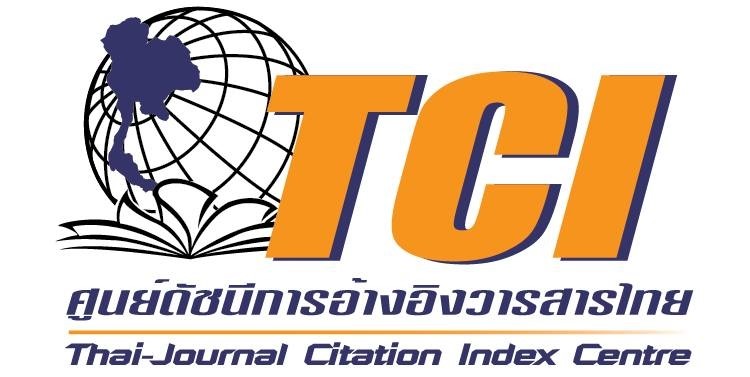ภาวะผู้นำเชิงสร้างสรรค์ของผู้บริหารกลุ่มโรงเรียนหนองหาน 3 สังกัดสำนักงานเขตพื้นที่การศึกษาประถมศึกษาอุดรธานี เขต 3
คำสำคัญ:
ภาวะผู้นำเชิงสร้างสรรค์, ผู้บริหารโรงเรียน, แนวทางพัฒนา, ผู้นำบทคัดย่อ
การศึกษาวิจัยครั้งนี้มีวัตถุประสงค์เพื่อศึกษาระดับและแนวทางพัฒนาภาวะผู้นำเชิงสร้างสรรค์ของผู้บริหารกลุ่มโรงเรียนหนองหาน 3 สังกัดสำนักงานเขตพื้นที่การศึกษาประถมศึกษาอุดรธานี เขต 3 ประชากรที่ศึกษา คือ โรงเรียน จำนวน 14 แห่ง ผู้ให้ข้อมูล คือ ครูผู้สอน จำนวน 88 คน เครื่องมือที่ใช้ในการวิจัย ได้แก่ แบบสอบถามและแบบสัมภาษณ์ มีค่าความเที่ยงตรง ระหว่าง .67-1.00 ค่าความเชื่อมั่นเท่ากับ .90 เก็บรวบรวมข้อมูลโดยใช้โปรแกรม Google form ได้รับตอบกลับคิดเป็นร้อยละ 98.14 วิเคราะห์ข้อมูลโดยใช้สถิติ ค่าความถี่ ค่าร้อยละ ค่าเฉลี่ย ส่วนเบี่ยงเบนมาตรฐาน และวิเคราะห์เนื้อหา 1) ระดับภาวะผู้นำเชิงสร้างสรรค์ของผู้บริหารกลุ่มโรงเรียนหนองหาน 3 ในสังกัดสำนักงานเขตพื้นที่การศึกษาประถมศึกษาอุดรธานี เขต 3 ภาพรวมอยู่ในระดับมาก ด้านที่มีค่าเฉลี่ยมากที่สุด คือ ด้านการเป็นผู้นำด้าน รองลงมาคือ ด้านการมีความยืดหยุ่นและปรับตัว ด้านการมีความคิดสร้างสรรค์ และด้านการทำงานเป็นทีม 2) แนวทางพัฒนาผู้นำเชิงสร้างสรรค์ของผู้บริหารกลุ่มโรงเรียนหนองหาน 3 เรียงลำดับจากค่าความถี่มากไปหาน้อย ดังนี้ บริหารสถานศึกษาควรมีทักษะในการบริหารจัดการสถานศึกษาในการกำหนดวิสัยทัศน์ของสถานศึกษาที่มีความชัดเจน กว้างไกล และสร้างสรรค์เพื่อนำพาสถานศึกษาสู่ความเป็นเลิศ ต้องมอบหมายงานตามความถนัดและความสามารถของบุคลากร มีความยุติธรรม มอบหมายและกระจายงานให้บุคลากรอย่างเท่าเทียมกัน ควรสร้างบรรยากาศที่ดีในการทำงานโดยกล่าวคำชมหรือให้กำลังใจผู้ใต้บังคับบัญชา มองโลกในแง่ดี มีความคิดเชิงบวกและมีความเฉลียวฉลาดสามารถแก้ไขปัญหาเฉพาะหน้าได้ดี และควรสนับสนุน และส่งเสริมให้บุคลากรใน สถานศึกษาได้เข้ามามีส่วนร่วมในการตัดสินใจ ในการปฏิบัติงาน
References
แก้วมณี ปัทมะ. (2564). แนวทางการพัฒนาภาวะผู้นำเชิงสร้างสรรค์ของผู้บริหารสถานศึกษา สังกัดสำนักงานเขต พื้นที่การศึกษามัธยมศึกษาสุรินทร์. วิทยานิพนธ์การศึกษามหาบัณฑิต มหาวิทยาลัยมหาสารคาม.
คติพงษ์ อ่อนไชย. (2564). แนวทางการพัฒนาภาวะผู้นำเชิงสร้างสรรค์ของผู้บริหารสถานศึกษาในอาชีวศึกษาจังหวัด
บุญชม ศรีสะอาด. (2554). หลักการวิจัยเบื้องต้น. (พิมพ์ครั้งที่ 9). กรุงเทพฯ: สุวิริยาสาส์น.
บุษบา คำนนท์. (2559). คุณลักษณะที่พึงประสงค์ของผู้บริหาร ในทัศนะของครูโรงเรียนสุรศักดิ์มนตรี สังกัด สำนักงานเขตพื้นที่การศึกษามัธยมศึกษา เขต 2. วิทยานิพนธ์ปริญญาการศึกษามหาบัณฑิตบัณฑิต มหาวิทยาลัยบูรพา.
พนิตา ไชยเทพ. (2558). ภาวะผู้นำเชิงสร้างสรรค์ของผู้บริหารสถานศึกษาโรงเรียนในกลุ่มตำบลแพรกษา สังกัดสำนักงานเขตพื้นที่การศึกษาประถมศึกษาสมุทรปราการเขต 1. งานนิพนธ์การศึกษามหาบัณฑิต สาขาวิชาการบริหารการศึกษา คณะศึกษาศาสตร์ มหาวิทยาลัยบูรพา.
ภรณ์ทิพย์ ปั้นก้อง. (2559). ภาวะผู้นำเชิงสร้างสรรค์ของบริหารโรงเรียนสังกัดสำนักงานเขตพื้นที่การศึกษาประถมศึกษาชลบุรี เขต 3. วิทยานิพนธ์ปริญญามหาบัณฑิต มหาวิทยาลัยบูรพา.
มนัญชยา ควรรำพึง เบญจพร ชนะกุล และสุภาพ เต็มรัตน์. (2564). ภาวะผู้นำเชิงสร้างสรรค์ของผู้บริหารในโรงเรียนขยายโอกาสทางการศึกษา สังกัดสำนักงานเขตพื้นที่การศึกษาประถมศึกษากระบี่.วารสารพุทธสังคมวิทยาปริทรรศน์, 6(3), 17-32.
ศักดิ์ชัย ภู่เจริญ. (2557). รูปแบบการพัฒนาภาวะผู้นำของผู้บริหารศูนย์การเรียนรู้ตามหลักปรัชญาของเศรษฐกิจ พอเพียงด้านการศึกษา สังกัดสำนักงานคณะกรรมการการศึกษาขั้นพื้นฐาน. วารสารราชพฤกษ์,13(3), 1-7.
สำนักงานเขตพื้นที่การศึกษาประถมศึกษาอุดรธานี เขต 3. (2565). แผนปฏิบัติการประจำปี พ.ศ. 2565. อัดสำเนา.
สุรศักดิ์ เล็กวงษ์. (2563). บทบาทภาวะผู้นำเชิงสร้างสรรค์ของผู้บริหารสถานศึกษาขั้นพื้นฐาน สังกัดสำนักงานเขต พื้นที่การศึกษาประถมศึกษาจันทบุรี. ปริญญาครุศาสตรมหาบัณฑิต สาขาวิชากาบริหารการศึกษา บัณฑิต วิทยาลัย มหาวิทยาลัยราชภัฏรำไพพรรณี.
เสาวนีย์ สมบูรณ์ศิโรรัตน์. (2562). การศึกษาภาวะผู้นาเชิงสร้างสรรค์ของผู้บริหารสถานศึกษา สังกัดสำนักงานเขต พื้นที่การศึกษาประถมศึกษาปทุมธานี เขต 2. วิทยานิพนธ์ปริญญามหาบัณฑิต บัณฑิตมหาวิทยาลัย มหาวิทยาลัยเทคโนโลยีราชมงคลธัญบุรี.
Amabile, T. M. (1996). Creativity in context. Westview Press.
Bass, B. M. (1985). Leadership: Theory and practice. Random House.
Bass, B. M., & Avolio, B. J. (1994). Improving organizational effectiveness through transformational leadership. Sage Publications.
Heifetz, R. A. (1994). Leadership without easy answers. Harvard Business School Press.
Kouzes, J. M., & Posner, B. Z. (1995). The leadership challenge: How to take charge, get things done, and create a culture for thriving performance. Jossey-Bass.
Krejcie, R.V. and Morgan, D. W. (1970). Determining Sample Size for Research Activities, Educational and Psychological Measurement, 30(3), 607-610.
Mayo, E. (1933). The human problems of an industrial civilization. Harvard University Press.
Robinson, K. (2007). The Principles of Creative Leadership. New York: McGraw-Hill.
Spreitzer, G. M. (1995). Psychological empowerment: Empowering others to succeed. Lawrence Erlbaum Associates.
Vroom, V. H., & Jago, A. G. (1980). Participation and decision-making. Prentice-Hall.
Downloads
เผยแพร่แล้ว
How to Cite
ฉบับ
บท
License
Copyright (c) 2024 วารสารวิทยาการจัดการ มหาวิทยาลัยราชภัฏสกลนคร

This work is licensed under a Creative Commons Attribution-NonCommercial 4.0 International License.
บทความที่ตีพิมพ์ในวารสารวิทยาการจัดการ มหาวิทยาลัยราชภัฏสกลนคร เป็นทัศนะ ลิขสิทธิ์ และความรับผิดชอบของผู้เขียนเจ้าของผลงาน






